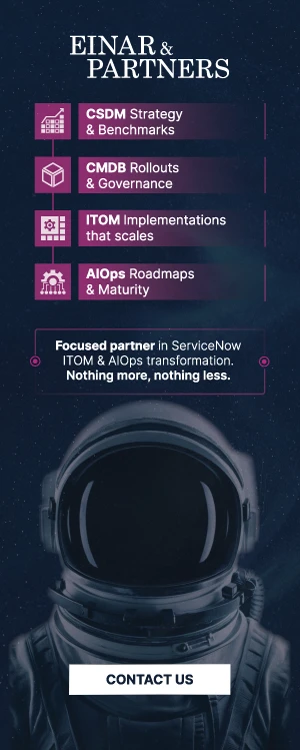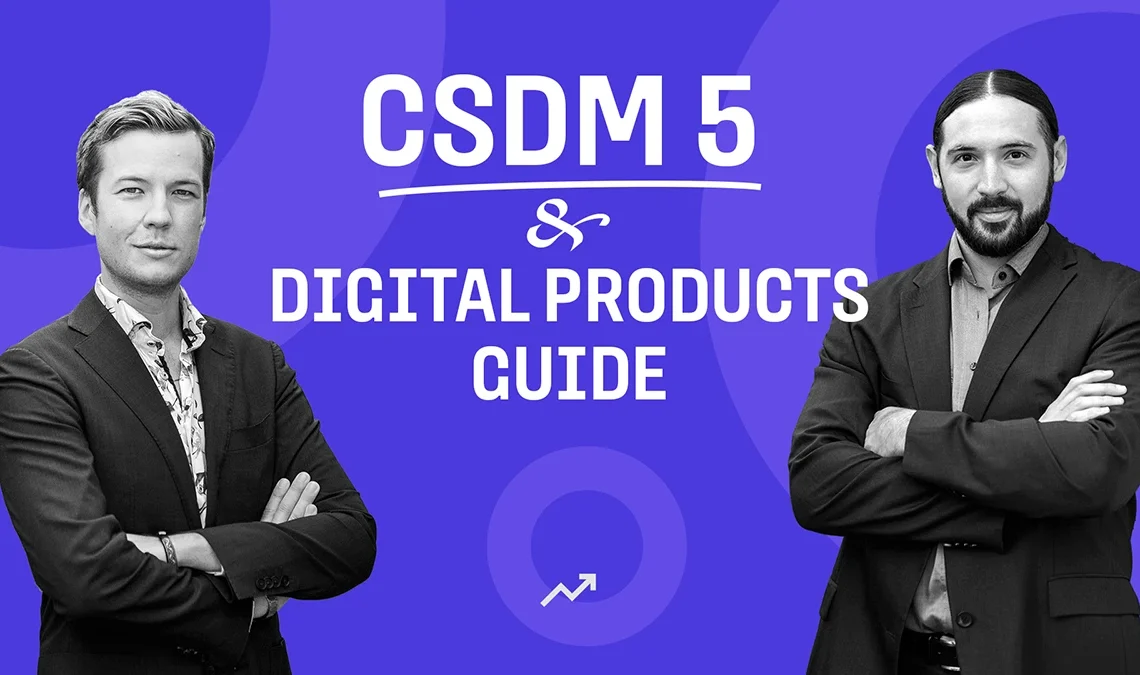
Summary of article for busy people:
Business Applications will change label to "Digital Products", and the design domain will experience updates to make the term "Business Applications" less confusing and more flexible. Additionally, new Digital Product Portfolio's will be introduced together with updated personas and roles. Only labels will change and no tables.
The world of service delivery is evolving rapidly, and the introduction of CSDM 5 (Common Service Data Model) marks a significant step forward for organizations looking to optimize how they manage, deliver, and consume digital products and services. Built on the foundation of previous models, CSDM 5 in ServiceNow introduces an updated framework that has great potential to transform the way we approach digital product management, governance, and service delivery.
This comprehensive article, the first of many in our new CSDM 5 series, delves into what CSDM 5 brings to the table, the benefits it offers, and how businesses can start preparing for its full release. Whether you are an IT leader, enterprise architect, or tech-savvy VP, understanding these key updates is critical to gain the best value out of the CSDM framework. Today, we are going to have a closer look at the “Design & Planning” domain of CSDM 5.
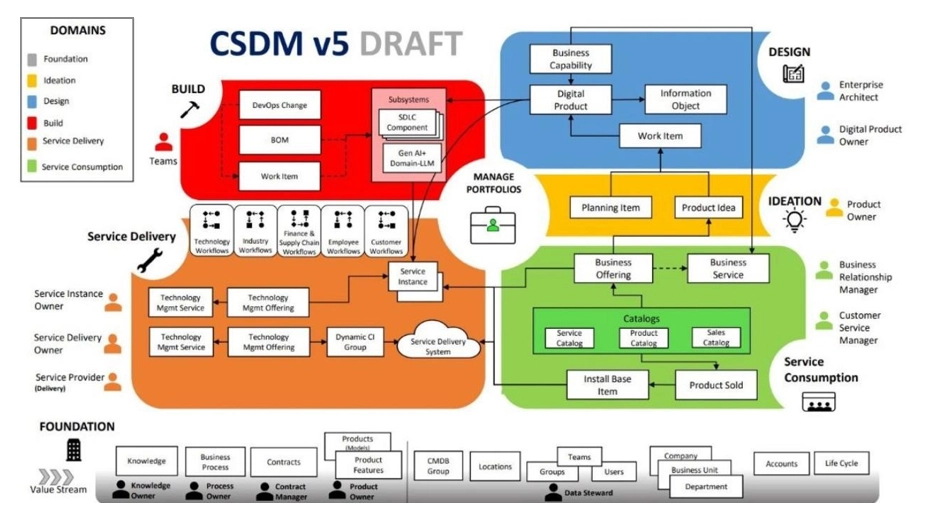
Introduction to CSDM 5: What’s Changing?
Before we dive into the governance and data-model aspects of CSDM 5, let’s be clear that the release of the model at the time of writing is still in draft. The information we outline in our articles series is based on publicly known information, webinars and interviews about CSDM 5 at the time of writing in November 2024. The areas we outline are the one’s with high likely hood to be included, but as always – small alterations and details may still happen based on community feedback. With that in mind; let’s dive in.
CSDM 5 builds on the previous CSDM frameworks from ServiceNow with the overall aim to have a common data model for all pockets of the enterprise. Ranging from IT Operations to Service Delivery and end-users/consumer perspective. One of the most prominent shifts is moving from the narrow view of only service delivery to a more holistic digital product management approach.
“But wait? Haven’t we fought for years to establish a service centric approach?” you may wonder.
Don’t worry; services, offerings, and service delivery are still an instrumental core element of CSDM 5. But it is now enhanced by a growing concept called “Digital Products” which we’ll tell more about later in the article.
Why is change necessary? The shortcomings of CSDM 4.0
CSDM is on virtually every ServiceNow roadmap out there in some capacity or another. It is the glue that links together the platform between different processes, and to adopt ServiceNow philosophy: “Everything as a service”. When you have ITSM, GRC, CSM, ITOM and other modules active in ServiceNow – CSDM acts as a linkage between these modules and allows you to leverage the full platform functionality. In a similar fashion, CSDM also enables organizations to be deliberate and intentional around Service Delivery.
How an organization construct, deploy and define their services across the value chain is a fundamental to excellent service delivery. With that concept comes governance, ownership, compliance and performance metrics. Yet CSDM is not without its shortcomings.
According to a recently released research report by our Research Unit, where we benchmarked over 40 CSDM transformations, organizations namely struggle with:
- Challenge of simplicity and clarity around concepts; what is a service, an offering, a business application?
- Definitions and best practices are often ambiguous; Example such as “when does something become a business vs a technical service?”
- Open for interpretations in personas and governance. Who are the personas in CSDM, how are ownerships defined and architecture best practices
At the same time, according to the above report, a majority of organizations drive and achieve value with CSDM (otherwise it wouldn’t be popular and have new versions released). The points mentioned is what CSDM 5 is trying to address.
Key Updates of CSDM 5 – Design Domain
Introduction of Digital Products and renaming of Business Applications
Business Applications is a somewhat misunderstood part of CSDM. In the many CSDM projects Einar & Partners have done, the fundamental question of “What is a business application?” already opens a can of worms. The naming in and of itself is sometimes confusing, especially in light of Application Services, Applications and Software.
To address this gap, a cornerstone of CSDM 5 is the introduction of digital products. Digital Products is not a concept invented by ServiceNow, instead it derives from best practices of Open Group, the creators behind IT4IT (where the creator of CSDM also happens to be a prolific member).
What is a digital product? Definition and guidance
A “digital product” is a service, physical item or digital item that provides an agreed and specific outcome for a consumer, and that incorporates and requires software to realize an outcome.
The above quote is the official definition from Open Group. To be less abstract, “digital products” refers to any software, application, or technology-based solution that delivers value to customers or users. More specifically in ServiceNow, a digital product may represent a service, hardware/goods or a business (enterprise) application.
Why Digital Products? What is the benefit?
Digital Products merges multiple disciplines under an umbrella term. Where management of services and technology falls and merges under the concept of “Digital Product Management’. Fundamentally, it helps organizations shift the focus from projects to products, which supports a wide spectrum of services, hardware and applications (as long as they are digital).
Additionally, Digital Products allows for greater end-2-end management of products. From initial ideation to retirement, and through-out the lifecycle a continuous stream of updates and enhancements. Digital Product Management emphasize service delivery, user experience, and integration with other IT services to support business outcomes.
Business Applications will change label to “Digital Products”
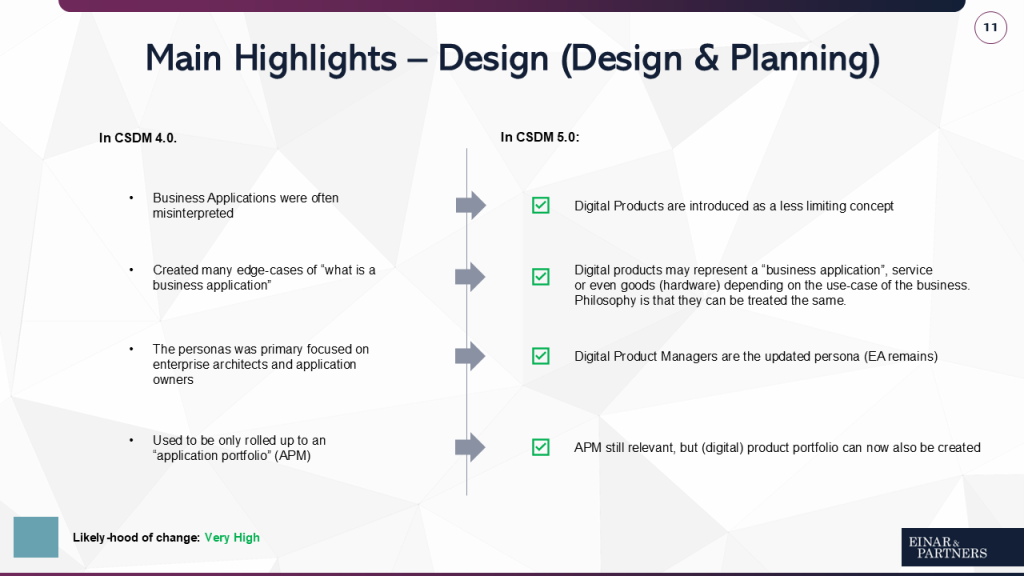
The first change to the Design Domain is that it will first of all likely be called “Design & Planning”. The concept of Business Applications will still be valid, but the label will change to “Digital Products”. However, the definition of what makes up a digital product is therefor expanded. As previously mentioned, a Digital Product may represent:
- A Service
- A hardware/goods (which is digital, think for example, a modern car requiring many different software components and connected to the cloud)
- A Business Application
The overall philosophy is that the above can all be treated the same. To illustrate this better, think of a Digital Product having the ability to power all of the following examples:
- An eCommerce or website portal of an enterprise
- A mobile app for customers
- Operational Technology and IoT solutions
- A modern gym equipment product connected to the cloud (hardware)
In the next article, we will go through how Digital Products will relate to Service Instances (application services) and the operational IT landscape.
New Persona – Digital Product Manager
Another important part of CSDM 5 is the personas. The enterprise architect will still have a key role in the “Design & Planning” aspect of CSDM 5, but the new persona introduced is what is known as “Digital Product Manager”.
Digital Product Portfolios in ServiceNow
Previously, Business Applications was used in the context of Application Portfolio Management (APM). This will continue to be valid way of using Digital Products, but on top off that a new “Digital Product Portfolio” will likely be introduced in a future release. The philosophy being that organizations should have the possibility to treat services, applications, and hardware not as separate entities but as part of a broader digital product portfolio. This shift in perspective will enable businesses to manage their offerings more holistically, ensuring governance, scalability, and service consistency across the board.
The introduction of a digital product portfolio will simplify complex service chains and offer a clearer picture of how different digital products contribute to the organization’s goals, ensuring that everything aligns with strategic objectives. See the example below.
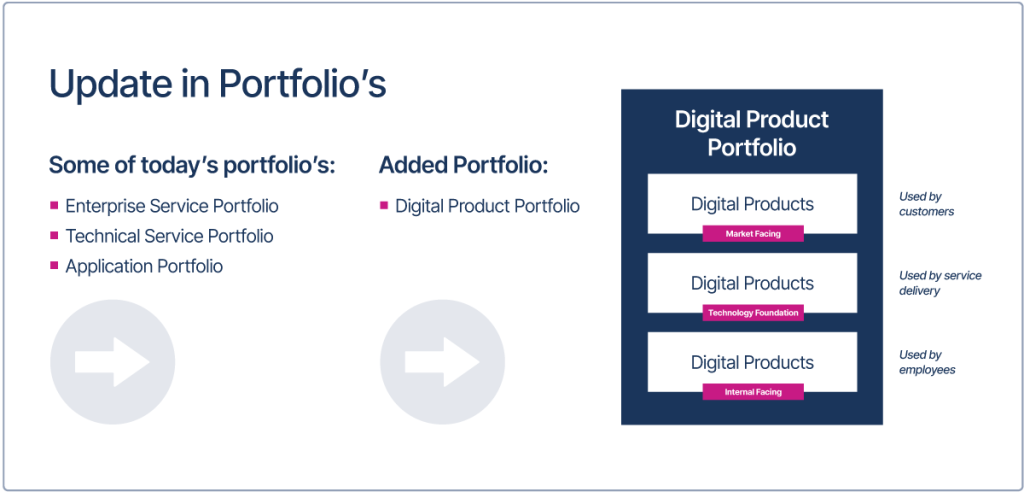
What you can do to get ready for Digital Products in ServiceNow
Some organizations we speak to may have had challenges anchoring the concepts of “Business Applications” and enforcing definitions consistently. The question then becomes “Do we need to change again?” when you just managed to land a consensus. Truth is that the data-model stays largely intact, and it is just the label which is changing. In other words no changes to tables or existing relationships. If your organization choose to embrace the modern concept of Digital Products or stick to the old Business Applications is there for up to you, and in worst case – you can always switch back the label.
The trend is moving towards Digital Products
Truth is that Business Applications is, according to our research, in need of simplification and a less restrictive concept. The overall trend is moving towards a more digital product centric world, where the focus is more on value streams and outcomes. Service delivery, services and service consumption is still a critical component of this ecosystem – but it starts with Digital Product Management. The full ideation, design and lifecycle of a digital product and how it is managed becomes important. Last but not least, the gap between Enterprise Architects and (Digital) Product Managers is finally bridged in a more simple model.









